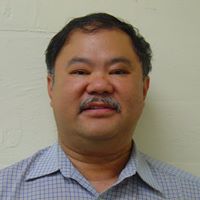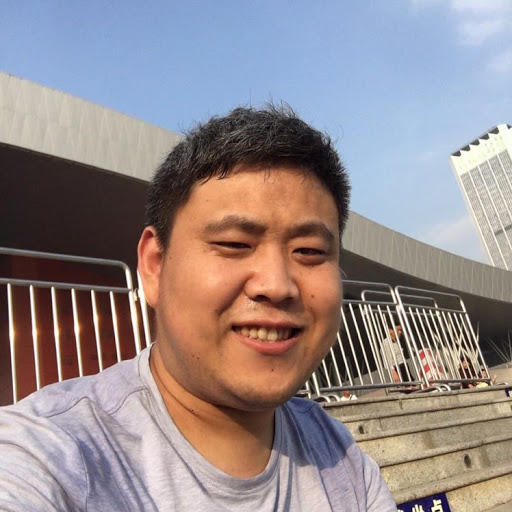Chi K Chan
age ~57
from Naples, FL
- Also known as:
-
- Chi Kow Chan
- Chi Wai Chan
- Chikow Kow Chan
- Chikow K Chan
- Chiw W Chan
- Kow Chan Chikow
- Chikow Cham
- Kon Chanchi
Chi Chan Phones & Addresses
- Naples, FL
- Tannersville, PA
- Manahawkin, NJ
- Ocean, NJ
- Bridgewater, NJ
- Trenton, NJ
- Lebanon, NJ
- Monroeton, PA
- Middlesex, NJ
- Piscataway, NJ
Lawyers & Attorneys

Chi Chan - Lawyer
view sourceOffice:
Pang & Associates
Specialties:
Civil Litigation
Criminal Litigation
Criminal Litigation
ISLN:
919757668
Admitted:
2000
Wikipedia References

Chi Ming Chan
Name / Title
Company / Classification
Phones & Addresses
President
Sky Elite International Inc
Whol Fish/Seafood
Whol Fish/Seafood
205 Gardner Ave, Brooklyn, NY 11237
3478707988
3478707988
President
Sea Pirate Seafood Suppliers Inc
Whol Fish/Seafood
Whol Fish/Seafood
1 Shale Ct, East Windsor, NJ 08520
7326040856
7326040856
Principal
Sunrise Professional Servi
Services-Misc
Services-Misc
2038 Bath Ave, Brooklyn, NY 11214
Principal
Life Express Inc
Business Services
Business Services
3057 Ave U, Brooklyn, NY 11229
Principal
Constitution Realty LLC
Real Estate Agent/Manager · Real Estate Agents
Real Estate Agent/Manager · Real Estate Agents
26 Broadway, New York, NY 10004
2127852168
2127852168
Family And General Dentistry
Thomas Chang MD
Medical Doctor's Office
Medical Doctor's Office
210 Canal St, New York, NY 10013
2122851143
2122851143
EIGHTY-EIGHT HARVEST INC
Golden Carriage Bakery 162 East Broadway, New York, NY 10002
162 E Broadway, New York, NY 10004
162 E Broadway, New York, NY 10004
Chi Chan DDS
Dentists
Dentists
210 Canal St, New York, NY 10013
2123850001
2123850001
Resumes

Chi Cheng Ken Chan
view source
Chi Man Chan
view source
Chi Chan
view source
Chi Wai Chan
view source
Chi Fung Chan
view source
Chi Ming Chan
view source
Chi Yuet Xavia Chan
view source
Chi Cheng Ken Chan
view sourceWork:
University of California since Sep 2007
Research Assistant
Genencor International Jun 2008 - Aug 2008
Crossflow Filtration Engineer Intern
Central Contra Central Sanitary District Jan 2007 - Jun 2007
Co-op Mechanical and Quality Engineer Assistant
University of California, Berkeley Sep 2006 - Dec 2006
Research Assistant
Research Assistant
Genencor International Jun 2008 - Aug 2008
Crossflow Filtration Engineer Intern
Central Contra Central Sanitary District Jan 2007 - Jun 2007
Co-op Mechanical and Quality Engineer Assistant
University of California, Berkeley Sep 2006 - Dec 2006
Research Assistant
Education:
University of California, Berkeley 2004 - 2008
Medicine Doctors

Dr. Chi F Chan, New York NY - DDS (Doctor of Dental Surgery)
view sourceSpecialties:
Dentistry
Address:
210 Canal St Suite 609, New York, NY 10013
2123850001 (Phone), 2123850002 (Fax)
2123850001 (Phone), 2123850002 (Fax)
Languages:
English
Education:
Medical School
Graduates of Institutions Not Listed As Medical Schools
Graduates of Institutions Not Listed As Medical Schools

Chi Yuen Chan
view sourceUs Patents
-
Method And System For Transferring Data In A Communications Network Using Redundant Communication Paths
view source -
US Patent:7590756, Sep 15, 2009
-
Filed:May 13, 2005
-
Appl. No.:11/128355
-
Inventors:Chi Chiu Chan - Wayne NJ, US
-
Assignee:ITT Manufacturing Enterprises, Inc. - Wilmington DE
-
International Classification:G06F 15/173
-
US Classification:709238, 709239, 709240, 370225, 370228, 370231, 370235, 370237, 370390, 370389, 370392
-
Abstract:A communication node of the present invention automatically transmits original and duplicate packets over different paths in a communications network to improve delivery reliability of the packet and to decrease packet delivery time. A packet is typically marked for reliable transmission by the application layer of a source node, while a routing agent module within the node IP layer processes the marked packets. The marked packets are transmitted over redundant (e. g. , primary and secondary) network paths from the source node to the destination node. The primary path is usually the shortest path between the source and destination nodes, while the secondary path is selected to avoid overlap with the primary path. The application or transport layer of the destination node filters or removes plural copies of received packets.
-
Method And System For Efficient Network Formation And Maintenance Of Node Routing Databases In A Mobile Ad-Hoc Network
view source -
US Patent:7787450, Aug 31, 2010
-
Filed:Oct 11, 2006
-
Appl. No.:11/545587
-
Inventors:Chi Chiu Chan - Wayne NJ, US
Amit Patel - Edison NJ, US -
Assignee:ITT Manufacturing Enterprises, Inc - Wilmington DE
-
International Classification:H04L 12/28
-
US Classification:370389, 370236, 370238
-
Abstract:An efficient network formation technique for mobile ad-hoc wireless networks according to the present invention overcomes bandwidth overhead due to generation of database update or Link State Advertisement (LSA) messages in response to changes in certain parameters (e. g. , node group size, etc. ) with respect to both single and plural node group scenarios. The present invention controls flooding of LSA messages triggered by changes in these parameters (e. g. , node group size), thereby reducing overhead traffic during network start-up. This is achieved without impact on message delivery capability and group merge operations. After network start-up is complete and the network is formed, the present invention continues to reduce LSA flooding in a mobile scenario when radios or nodes move into and out of range with one another.

Chi Keung Chan
view source
Chi Chan
view source
Chi Chan Mak
view source
Chi Chung Chan
view source
Chi Keung Chan
view source
Mc Dha Chi Chan
view source
Chi Chan Nghi
view source
Shar Wing Chi Chan
view sourceYoutube
Plaxo

chi ying chan
view sourcedop at cyc workshop

chi fai chan
view source
Chi Chan
view sourceSales at Courtesy Chevrolet
Classmates

Chi Ho Chan
view sourceSchools:
Oak Grove Lutheran High School Fargo ND 1989-1993
Community:
Bodil Ehlbeck, Mary Anderson

Chi Ming Chan
view sourceSchools:
Berendo Junior High School Los Angeles CA 1975-1977

Chi Wai Chan
view sourceSchools:
University of Houston - Main Campus Houston TX 1974-1978
Community:
Geoffrey Jones, Daniel Varney

Chi Hin Chan
view sourceSchools:
Fraser High School Mississauga Morocco 1998-2002
Community:
Peter Macmillan, Phyllis Walker, Scott Macneil

Chi Chan
view sourceSchools:
Homecrest Public School 153 Brooklyn NY 1980-1986
Community:
John Russo, Frank Troise, Ralph Mendez

Chi Fai Chan
view sourceSchools:
Linwood Middle School North Brunswick NJ 2004-2008
Community:
Sefrah Easie, Marquise Ridriguez

Hsin-Chi Chan, Flagstaff ...
view sourceMyspace
Flickr
Googleplus

Chi Chan
Work:
銀石[GINSHI]

Chi Chan

Chi Chan
Tagline:
Ipinaglalaban ko ang Wikang Filipino at karapatan ng mga Isda
Bragging Rights:
Maganda ako mag-sulat!!!!

Chi Chan (陳志平)

Chi Chan

Chi Chan

Chi Chan
Tagline:
I collect antique horseshoes and limited-edition toilet paper. Contact me if you have interest in the same.

Chi Chan
Get Report for Chi K Chan from Naples, FL, age ~57





![Chi-chan's Moogle Song [Ichigo Mashimaro MAD] Chi-chan's Moogle Song [Ichigo Mashimaro MAD]](https://i.ytimg.com/vi/yk14CmgaunY/0.jpg)









